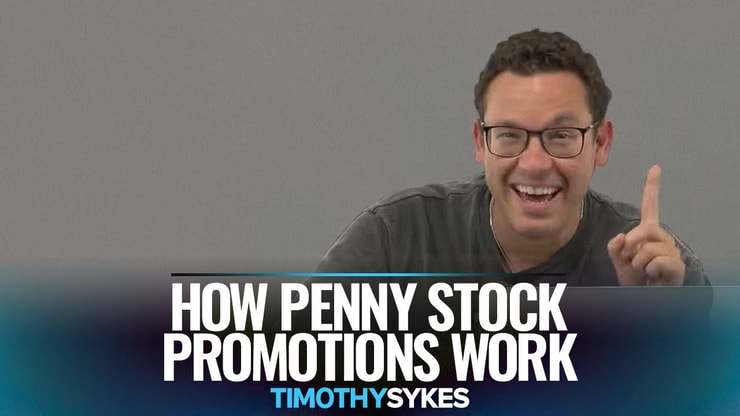It’s essential that you understand the truth about the stock market.
The REAL truth.
Not the story that Wall Street spins us.
Otherwise, we’re doomed to fall victim to the overarching narrative that continues to take advantage of unsuspecting traders. A revolving door of pain and losses.
The truth is, in the stock market, there’s greed and corruption around every corner.
We see it at all levels …
From the very top:
- Elected officials who consistently beat the market due to insider information.
- Not to mention President Trump promoting his own crypto token while a stablecoin bill passes congress.
To the very bottom:
- Yesterday, June 18, a lowly penny stock announced news that spiked the share price 360%*. Then the company issued new shares, tanking the price of the stock. They pulled the rug out from under buyers. It was a blatant cash grab.
This has been happening for decades.
All the stories that you hear: Sam Bankman-Fried with FTX, Jordan Belfort as the wolf of Wall Street, even the 2008 financial crisis …
They’re all stories of greed in the market.
Unfortunately, history repeats.
When there’s this much money moving around every day, there will always be low-life players who try to satiate their lust for wealth and power at any moral cost.
Luckily …
Savvy traders who understand the true nature of the market have an incredible opportunity to bank off of blatant pumps and promotions in the market.
For example, yesterday’s 360%* stock spike … It wasn’t the only runner that day.
Every week there are new stocks that spike +100%* in the market.
There are even ways to trade alongside elected officials and Trump’s crypto push.
Yes, corruption exists. But don’t let it dampen your spirits.
Instead, flip the script.
Use The Corruption For Your Own Gains

2025 Millionaire Media, LLCI specialize in trading penny stock corruption … But as I’ve already mentioned, we can find this corruption anywhere.
I’ve traded penny stock pumps for over 20 years.
Ever since I started, during the dot com bubble in the late 90s and early 2000s, there have been countless stock pumps.
That’s not hyperbole.
There are at least a handful of insane stock spikes every week. And there are 52 weeks in a year.
After 25 years of trading … Multiply all that up and it gives you a good average.
But there’s no way I could keep track of all of these runners.
This week alone I’m overwhelmed at the number of stocks spiking +100%, look at my post below:
Whewwwwwwww, thank you overaggressive short sellers for making $KWE sooooo GREAT, just like $RBNE $HUSA $CERO it's literally every single day….I sold too early in the $13s before the $15s, but I'm fine with that…thanks to https://t.co/6cuTVNHVBf for alerting the news/buy! pic.twitter.com/j5RPSN17hj
— Timothy Sykes (@timothysykes) June 18, 2025
That was before the 360%* spike and breakout on Aptevo Therapeutics Inc. (NASDAQ: APVO) …
On June 18 during premarket hours, APVO announced compelling clinical data from a trial of its treatment for acute myeloid leukemia.
It was a classic inflationary press release that spiked the price of the stock. The price action followed my breakout pattern perfectly.
Until, the stock reached a huge move on the day … Then the company issued new shares, diluted the share count, and tanked the price of the stock.
Look at the APVO price action below. Every candle represents one trading minute:

Pumps like this happen over, and over, and over again in the market.
We can trade the price action. But we have to take gains before the stock pump tanks.
These stocks don’t always issue new shares, most of the time the stocks just lose steam and the price drops.
No matter the case, it’s important to follow my process.
Don’t believe in the stock. Just play the price action.
For a full explanation of these plays, watch my video below:
The Next Corruption Opportunity
There’s always another trade setup around the corner.
And you don’t have to trade penny stocks to get in on the action.
For example, Trump’s reelection included a hopeful path toward a legitimized cryptocurrency that’s recognized by The U.S. Government.
And as of June 17, we got a lot closer to a U.S. stablecoin.
The U.S. Senate just passed the stablecoin bill. And now it only needs to pass The House before it reaches Trump’s desk.
I’m not telling you to buy Bitcoin. I’m still nervous about the overall volatility.
And I wouldn’t touch Trump’s crypto token with an 80 foot pole …
But there are still ways to trade this momentum without buying a risky cryptocurrency.
Circle Internet Group Inc. (NYSE: CRCL) IPOed on June 5. It’s a legitimate company, not a penny stock, and it runs one of the largest stablecoin networks in the world.
It already spiked 170%* since the IPO.
Yesterday, June 18, it spiked to new all-time highs and followed my breakout pattern three times intraday.
Look at the chart below:

The great thing about trading larger stocks like this is there’s less risk for random offerings that tank the share price.
There are still shady dealings, but the SEC watches more closely. So Wall Street has to be more clever.
Already, Trump’s presence in the White House has turned the market into a playground of volatility.
The 170%* spike from CRCL and an upcoming stablecoin … That’s just one example …
Already this year, a trader in our community has pulled $500k from this Trump market.
All without touching a single penny stock.
I’m telling you, my patterns work across multiple markets.
See for yourself! And snag some of this Trump volatility.
Cheers
*Past performance does not indicate future results








Leave a reply